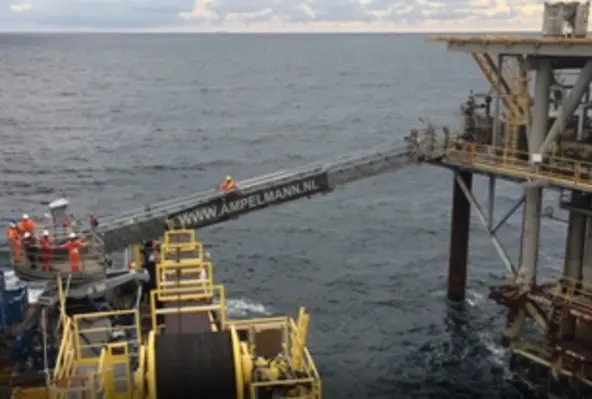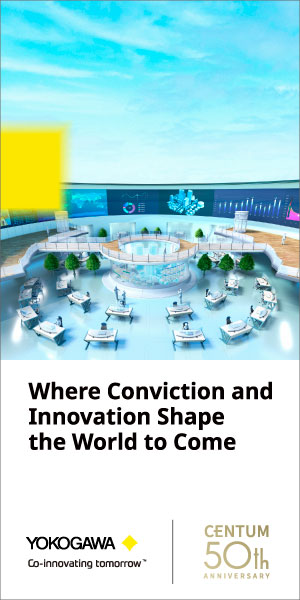Ampelmann’s W2W solutions provide safe and reliable access during offshore operations
The last two decades have seen tremendous changes in the offshore service sector. The introduction of Walk to Work (W2W) has permanently changed the nature of the global offshore energy infrastructure. In just 15 years, Ampelmann, one of the early pioneers of W2W, has grown from a small engineering start-up based in the Netherlands, to an international company with a large fleet operating in all corners of the world. Known globally for its motion compensated gangways, the company’s systems have made marked strides everywhere and see continuous use throughout the world.
Fast becoming the new industry standard, W2W has much to offer to the Gulf. As the region contains the largest offshore hydrocarbon reserves in the world, the exploration, production and maintenance of offshore assets is growing consistently with the rising demands for energy. Ampelmann’s marine based W2W solutions are cost-effective and provide safe and reliable access during offshore operations, offering a powerful alternative to traditional access solutions.
Sea conditions in and around the Gulf can be surprisingly harsh at certain times of the year. During the winter months, some parts of the region frequently experience rough seas and strong winds. As motion-compensated gangways remain stable during offshore operations, they can operate throughout the year and provide safe and consistent access to offshore installations in spite of seasonal constraints. By reducing the time vessels cannot transfer personnel due to bad weather, W2W solutions extend weather windows and shorten the duration of campaigns, resulting in higher operational efficiency and year-round productivity.
W2W is ideally positioned in the Gulf as the safest and most cost-effective offshore access solution that simultaneously provides consistency and high workability. By enabling continuous access throughout the year, W2W offers significant advantages over traditional access methodologies due to the motion compensated technology that underpins it.
Ampelmann’s gangways come in many sizes and shapes and are specifically tailored to meet the evolving demands of its clients. W2W solutions provide effective operational support throughout the entire lifecycle of offshore assets. Since its first operation in the Gulf over twelve years ago, the company has successfully supported a large variety of short and long-term work scopes, ranging from general operations, such as crew change and maintenance, to installations, shutdowns and decommissioning work.
Ampelmann prides itself on its innovative spirit and is building and designing new electric systems that contribute to the development of sustainable solutions and suit the specific needs of its clients in the Middle East. The company has already begun to electrify the entire A-type fleet, which will lead to a future energy saving of 90%. Alongside the electrification of its most popular system, the company recently introduced the F-type, an electric modular system that is particularly well suited for maritime conditions such as those in the Gulf. Its 21m height-adjustable gangway allows for continuous crew change and increased operational flexibility at low cost. New electric systems, such as these, promise that W2W will remain an appealing access solution for the foreseeable future.
Deeply involved in the regional market, Ampelmann has offices in Qatar and Dubai. Its A- and L-type gangways have already transferred more than 1,200,000 people for national and international clients in Qatar, Dubai, Oman, Saudi Arabia and Azerbaijan, and more recently in Abu Dhabi. This strong regional presence allows the company to deploy and mobilise its systems at short notice, whenever and wherever they are needed. It is evident that W2W is a key area of growth for the offshore energy sector in the Gulf region.










